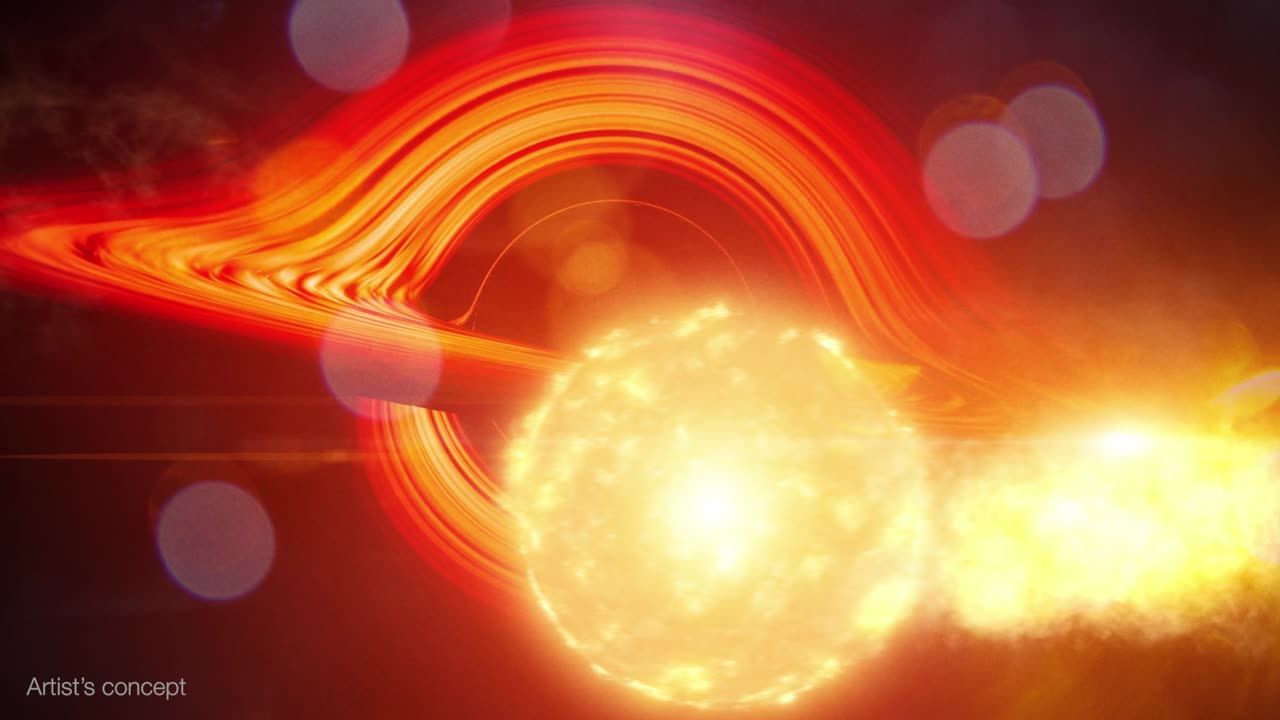Premium Only Content

Swift Utilizes Innovative Technique to Detect a Feeding Black Hole
Watch to learn how an update to NASA’s Neil Gehrels Swift Observatory allowed it to catch a supersized black hole in a distant galaxy munching repeatedly on a circling star.
Using NASA’s Neil Gehrels Swift Observatory, which launched in 2004, scientists have discovered a black hole in a distant galaxy repeatedly nibbling on a Sun-like star. The object heralds a new era of Swift science made possible by a novel method for analyzing data from the satellite’s X-ray Telescope (XRT).
When a star strays too close to a monster black hole, gravitational forces create intense tides that break the star apart into a stream of gas. The leading edge swings around the black hole, and the trailing edge escapes the system. These destructive episodes are called tidal disruption events. Astronomers see them as flares of multiwavelength light created when the debris collides with a disk of material already orbiting the black hole.
Recently, astronomers have been investigating variations on this phenomena, which they call partial or repeating tidal disruptions.
During these events, every time an orbiting star passes close to a black hole, the star bulges outward and sheds material, but survives. The process repeats until the star looses too much gas and finally breaks apart. The characteristics of the individual star and black hole system determine what kind of emission scientists observe, creating a wide array of behaviors to categorize.
On June 22, 2022, the XRT captured Swift J0230 for the first time. It lit up in a galaxy around 500 million light-years away in the northern constellation Triangulum. Swift’s XRT has observed nine additional outbursts from the same location roughly every few weeks.
Scientists propose that Swift J0230 is a repeating tidal disruption of a Sun-like star orbiting a black hole with over 200,000 times the Sun’s mass. They estimate the star loses around three Earth masses of material on each pass. This system provides a bridge between other types of suspected repeating disruptions and allowed scientists to model how interactions between different star types and black hole sizes affect what we observe.
Swift J0230’s discovery was possible thanks to a new, automated search of XRT observations called the Swift X-ray Transient Detector.
Credit: NASA’s Goddard Space Flight Center
-
 LIVE
LIVE
Drew Hernandez
6 hours agoMASS CONFUSION AROUND CHARLIE'S MURDER
836 watching -
 1:01:40
1:01:40
HotZone
6 days ago"Prepare for WAR" - Confronting the URGENT Threat to America
903 -
 1:13:57
1:13:57
Glenn Greenwald
4 hours agoYoung Men and Online Radicalization: Dissecting Internet Subcultures with Lee Fang, Katherine Dee, and Evan Barker | SYSTEM UPDATE #516
123K30 -
 LIVE
LIVE
Sarah Westall
1 hour agoCEO of Crowds on Demand: The Fake World of Social Media, Protests & Movements w/ Adam Swart
339 watching -
 LIVE
LIVE
Geeks + Gamers
4 hours agoTuesday Night's Main Event
480 watching -
 40:36
40:36
RiftTV
3 hours agoHow We Got 400 Leftists FIRED for MOCKING Charlie Kirk | The Rift | Guest: Olivia Krolczyk
42.6K26 -
 LIVE
LIVE
Badlands Media
16 hours agoBadlands Story Hour Ep 134: Godzilla Minus One
868 watching -
 LIVE
LIVE
Patriots With Grit
12 hours agoWrongful Death Without Consequences: Inside the Schara Trial | Scott Schara
106 watching -
 LIVE
LIVE
LFA TV
15 hours agoLFA TV ALL DAY STREAM - TUESDAY 9/16/25
749 watching -
 LIVE
LIVE
StevieTLIVE
2 hours agoWarzone Community Games to Start into Quads w/ The Fellas
86 watching